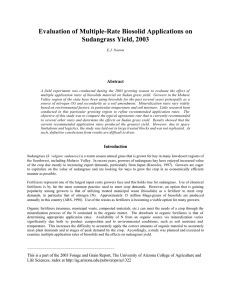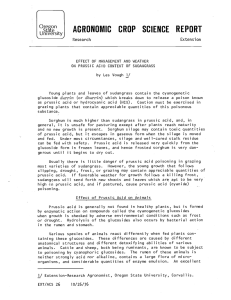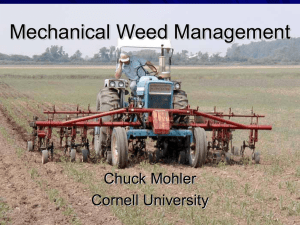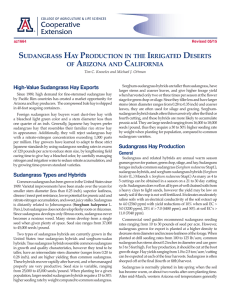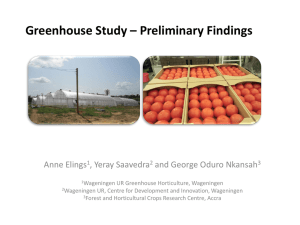Sudangrass
advertisement
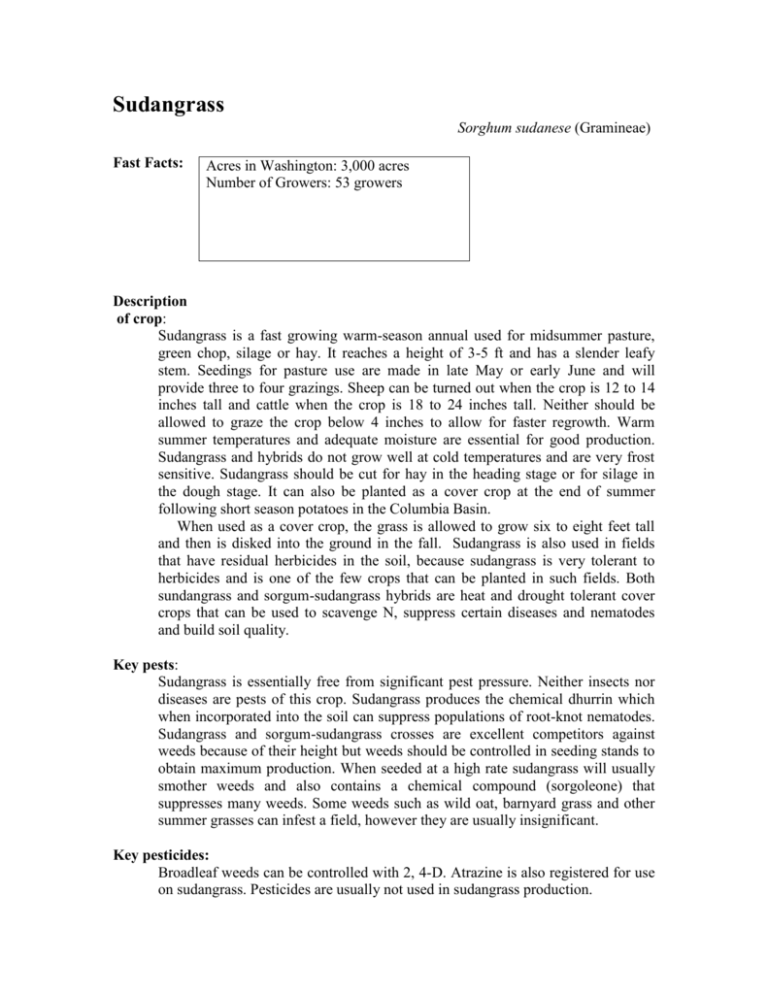
Sudangrass Sorghum sudanese (Gramineae) Fast Facts: Acres in Washington: 3,000 acres Number of Growers: 53 growers Description of crop: Sudangrass is a fast growing warm-season annual used for midsummer pasture, green chop, silage or hay. It reaches a height of 3-5 ft and has a slender leafy stem. Seedings for pasture use are made in late May or early June and will provide three to four grazings. Sheep can be turned out when the crop is 12 to 14 inches tall and cattle when the crop is 18 to 24 inches tall. Neither should be allowed to graze the crop below 4 inches to allow for faster regrowth. Warm summer temperatures and adequate moisture are essential for good production. Sudangrass and hybrids do not grow well at cold temperatures and are very frost sensitive. Sudangrass should be cut for hay in the heading stage or for silage in the dough stage. It can also be planted as a cover crop at the end of summer following short season potatoes in the Columbia Basin. When used as a cover crop, the grass is allowed to grow six to eight feet tall and then is disked into the ground in the fall. Sudangrass is also used in fields that have residual herbicides in the soil, because sudangrass is very tolerant to herbicides and is one of the few crops that can be planted in such fields. Both sundangrass and sorgum-sudangrass hybrids are heat and drought tolerant cover crops that can be used to scavenge N, suppress certain diseases and nematodes and build soil quality. Key pests: Sudangrass is essentially free from significant pest pressure. Neither insects nor diseases are pests of this crop. Sudangrass produces the chemical dhurrin which when incorporated into the soil can suppress populations of root-knot nematodes. Sudangrass and sorgum-sudangrass crosses are excellent competitors against weeds because of their height but weeds should be controlled in seeding stands to obtain maximum production. When seeded at a high rate sudangrass will usually smother weeds and also contains a chemical compound (sorgoleone) that suppresses many weeds. Some weeds such as wild oat, barnyard grass and other summer grasses can infest a field, however they are usually insignificant. Key pesticides: Broadleaf weeds can be controlled with 2, 4-D. Atrazine is also registered for use on sudangrass. Pesticides are usually not used in sudangrass production. Critical pest control issues: Sudangrass may have nitrate and prussic acid toxicities. They can have high nitrate accumulations in the early stages of growth, during drought stress or just after a frost and should not be grazed at these times. Growers should work with reputable seed dealers since there are differences among the varieties or hybrids for adaptation and maturity. They should use certifies seed of a low prussic acid variety. Piper sudangrass is a good variety for Washington. Expert contact: Kevin Flanagan Kappa Seeds 10882 State Road Quincy, WA 509 787 1561 Location of production: In eastern Washington: Benton, Columbia, Douglas,Ferry, Franklin, Grant, Kittitas, Okanogan and Walla Walla counties. In western Washington: Skagit county
